





| Larinioides cornutus (Clerck, 1757) |






|
|
Scientific name: Larinioides cornutus (Clerck, 1757) Common name: Other names: There are many other scientific names including Araneus cornutus, Epeira marmorata, Epeira cornuta, etc. French name: Épeire des roseaux Order: Araneae Family: Araneidae Size: Body size: 13 mm for females, 8 mm for males. Biotope: Near water, damp places. Web: Large size orb web, rudimentary built with less than 30 radii. It is usually located in low vegetation near water. During the day, Larinioides cornutus generally hides in a shelter built with detritus and with an opening on the under side. Observation period: Larinioides cornutus can afford freezing temperatures and winters hidden inside empty stems. That's why you can observe it from early spring to early winter. Geographic area: Europe, North Africa, North America, northern and temperate Asia. |
Larinioides cornutus is variable in colour, black and white with greyish marks or reddish brown. However the drawing pattern located on the abdomen is typical and enables to tell this species apart. There will always remains a doubt with Larinioides suspicax (also named Larinioides folium) which is very similar. However this last species prefers dry habitats and is rather found in Central and Southern Europe. The abdomen shows a pale arrow-point shaped mark pointing towards the cephalothorax. Inside is a smaller dark coloured arrow-point shaped mark. It is followed by a pale cross stripe, variable in width and usually with a dark patch in the centre. The back of the abdomen shows a dark shape, shrinking at the rear by steps and crossed by pale transversal stripes. Males are darker than females. Unlike many other spider species, the male can safely stay with the female without any risk. |
| [To know more about the Larinioides cornutus] [Next picture] [Top] |
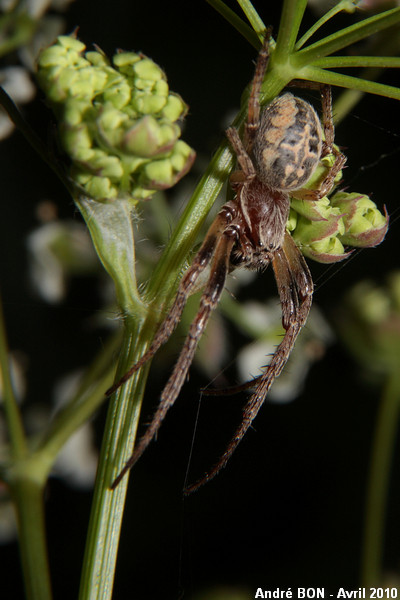
|
I have observed this Larinioides cornutus near the bank of a pond. It was hidden under an umbelliferae. It was certainly just coming out of its winter hide. |
| [To know more about the Larinioides cornutus] [Next picture] [Previous picture] [Top] |
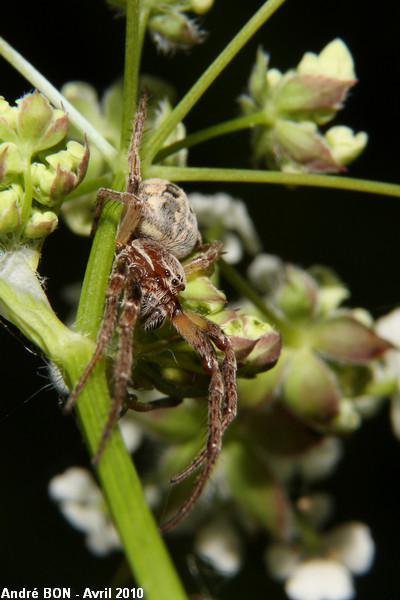
|
I have bent the umbelliferae to find a suitable angle of view for the picture. |
| [To know more about the Larinioides cornutus] [Next picture] [Previous picture] [Top] |
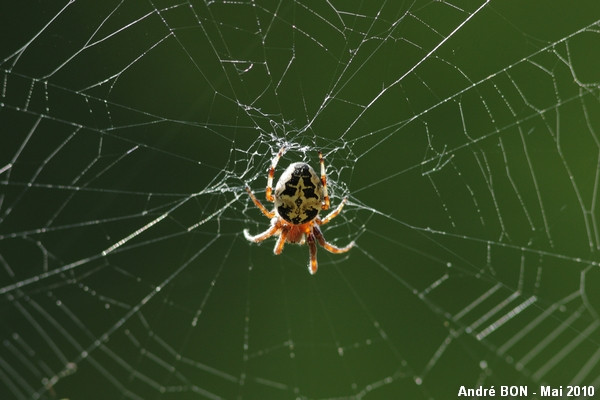
|
I have often observed this Larinioides cornutus at the centre of its web on the pond's bank. And I have read that these spiders are used to hiding in a shelter during the day … |
| [To know more about the Larinioides cornutus] [Next picture] [Previous picture] [Top] |
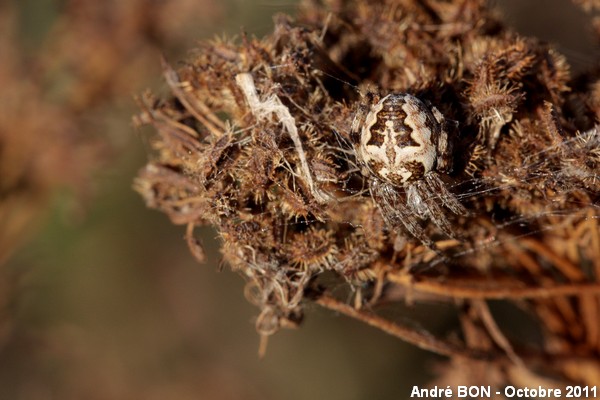
|
In autumn, the Larinioides cornutus that I am observing are hidden in a shelter on top of umbellifers or other high dry plants. |
| [To know more about the Larinioides cornutus] [Next picture] [Previous picture] [Top] |
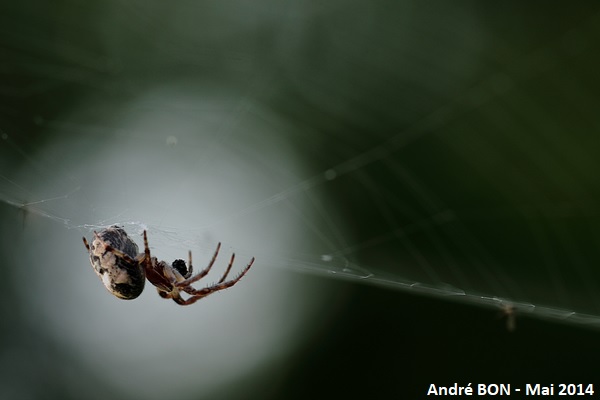
|
The issue when you work on your pictures a long time after having shot them is that, sometimes, you do not remember the exact shooting conditions. On this one, I do not remember what is causing this white patch in the bokeh. That is not the sun, nor the moon. Is this one Dandelion flower? |
| [To know more about the Larinioides cornutus] [Previous picture] [Top] |
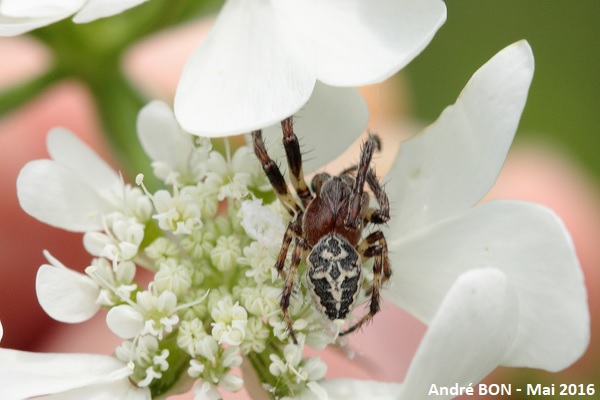
|
I have observed this spider rather far from water in a relatively dry habitat. As we are in Central Europe there is a high probability that is one is Larinioides suspicax. As I am not totally sure I just list it as Larinioides sp. |